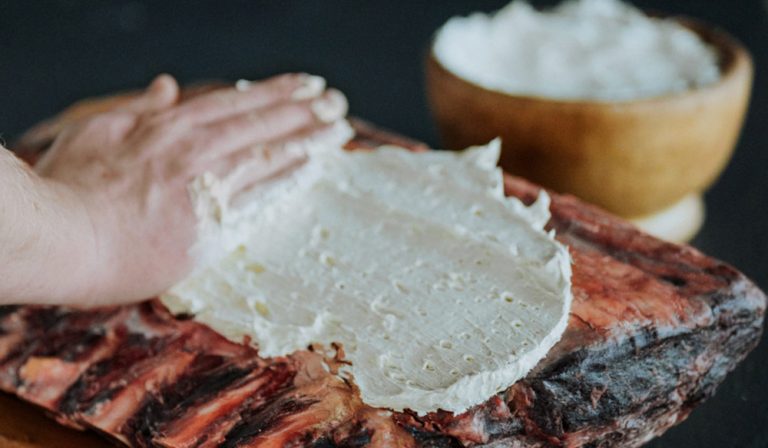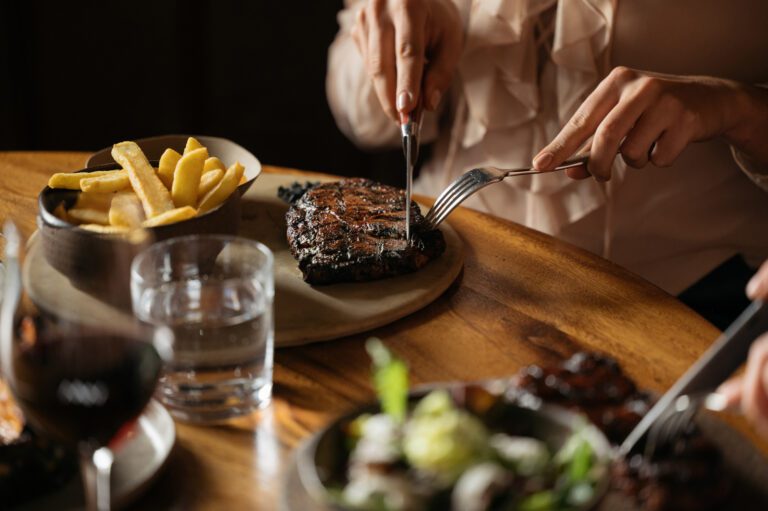It seems that fine wine isn’t the only thing that gets better with age, so does steak and the experience of eating dry-age meat is notably different to a cut of wet aged steak.
When you hear the term “wet-aged” or “dry-aged meat” do you know what that means? We are here to help!
The term ‘wet aging’ refers to a product that is sealed packed, without air, to prevent evaporation, and therefore “wet” from sitting in its own juices. The process can take 4-10 days, or sometimes longer.
Dry Aging is designed to improve two major meat characteristics – taste and/or tenderness; the process of aging meat is essentially carefully controlled decomposition. The process of dry-ageing meat goes back thousands of years, one of the oldest methods of keeping meat fresh besides smoking, pickling or brining it. Dry-aged meat, a time honoured technique, hangs in a humidity controlled environment to ensure exposure of all sides of the meat, with unimpeded airflow around the entire cut of meat. The meat is constantly monitored, and requires attention and care. Typically, the duration of dry-aging steak can be from 7 to 30 days and even months; however, the most common time frame is 28 – 30days.
How do the flavours differ?
The biggest difference between the wet and dry aging methods is while both have an effect on tenderness, dry-aging intensifies the meat flavour and is more tender because the fibre breakdown of the dry-ageing meat process.
Dry-aging tends to impart a rich, pungent, nutty and earthy flavour that’s intense, robust and commonly described as an incredibly tender steak because the aging process is lengthier, making the fibres within the muscle more moist and flavourful. The experience of indulging dry-age meat is buttery in texture and a deliciously ‘melt in your mouth’ experience that creates a transcendental mouth feed. Many steak connoisseurs label it as ‘the blue cheese’ of meat and a worthwhile introduction to texture, aroma and flavour.
Wet aged meat creates a mild flavour, it tastes fresh, tender and juicy; this is due to the wet age meat essentially sitting in its own juices, where the flavour seeps in to every bite.
Both dry-aged and wet-aged meat hold the wisdom and tenderness that come with time and preparation, both processes enhance the taste and texture of the meat. Essentially, it’s a matter of personal preference.
Come to The Meat & Wine Co and try the best dry-aged meat, experience the difference today!





/assets/images/ajax-loader.gif)